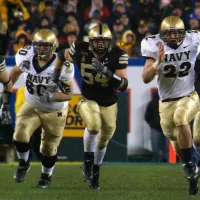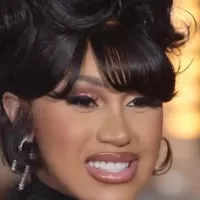The Ohio State Buckeyes football team represents Ohio State University, competing in the NCAA Division I Football Bowl Subdivision as part of the Big Ten Conference. Their home games are played at the iconic Ohio Stadium in Columbus, which has a capacity of 102,780 since 1922. The Buckeyes are one of the most successful programs in college football history, boasting numerous national championships, conference titles, and individual accolades.
1901: John Sigrist injury and Eckstorm's resignation
In 1901, Ohio State center John Sigrist sustained a fatal injury during a game against Western Reserve University, leading to serious questions about the future of the football program. Head coach John Eckstorm subsequently resigned.
1907: Exclusion of Michigan's Results
Results against Michigan between 1907 and 1916 are excluded from this table.
1912: Ohio State Joins the Big Ten
In 1912, Ohio State joined the Big Ten Conference after being a member of the Ohio Athletic Conference (OAC).
1916: Buckeyes win first Big Ten championship
In 1916, Chic Harley and the Buckeyes won the first Big Ten championship in school history, finishing with a 7-0 record.
1916: Exclusion of Michigan's Results
Results against Michigan between 1907 and 1916 are excluded from this table.
1917: Buckeyes repeat as Big Ten champions
In 1917, the Buckeyes, led by Chic Harley, repeated as Big Ten champions, finishing with an 8-0-1 record.
1919: Harley returns and Buckeyes lose one game
In 1919, Chic Harley returned to OSU, and the Buckeyes lost only one game, against Illinois.
1922: Ohio Stadium opens
In 1922, Ohio Stadium opened, prompted by record crowds drawn by Chic Harley. The stadium was built entirely on fan donations.
1922: Ohio Stadium becomes Buckeyes' home field
In 1922, Ohio Stadium, with a capacity of 102,780, became the home field for the Ohio State Buckeyes, located on the university's campus in Columbus.
1922: No event occurred
There were no specific details mentioned about events that occurred in 1922.
1933: Selected as National Champion by Major Selectors
In 1933, Ohio State was selected as national champion by various NCAA-designated major selectors, but the university does not recognize this championship.
March 1934: Ohio State hires Francis Schmidt as coach
In March 1934, Ohio State hired Francis Schmidt as its football coach, marking a move to a more competitive level. Schmidt, known for his innovative "razzle-dazzle" offense, was the first Buckeye coach to receive a multi-year contract.
1935: First game against Notre Dame
In 1935, the Ohio State football team played its first game against Notre Dame, losing 18-13.
1939: Ohio State wins Big Ten championship
In 1939, the Buckeyes, coached by Francis Schmidt, won the Big Ten championship.
1939: Exclusion of Chicago's Results
Results against Chicago after 1939 are excluded from this table.
December 17, 1940: Francis Schmidt resigns as head coach
On December 17, 1940, Francis Schmidt resigned as the head coach of Ohio State football, due to fading popularity after initial success and a Big Ten championship in 1939.
1942: Bill Willis becomes a Buckeye Star
Bill Willis became the first Buckeye African American star in 1942 and was prominent on the 1942-44 teams.
1942: Recognized National Championship
In 1942, Ohio State was recognized as a national champion by NCAA-designated consensus selectors.
1942: Ohio State wins first national championship
In 1942, despite losing 22 veteran players to military service, Ohio State, with a team primarily composed of sophomores, achieved its first national championship.
1944: Selected as National Champion by Major Selectors
In 1944, Ohio State was selected as national champion by various NCAA-designated major selectors, but the university does not recognize this championship.
1944: Paul Brown joins United States Navy
In 1944, Ohio State's coach, Paul Brown, accepted a commission in the United States Navy, ending his coaching tenure before the season began.
1944: 1944 team goes undefeated
In 1944, under the direction of Carroll Widdoes, Ohio State's team fielded 31 freshmen and completed an undefeated season, including a victory over Paul Brown's Great Lakes Navy team. Les Horvath won the Heisman Trophy.
1947: Wes Fesler becomes head coach
In 1947, Wes Fesler became the head coach for Ohio State's football team, but the team finished last in the Big Ten conference.
1948: Ohio State improves record
In 1948, Ohio State improved greatly, winning 6 games and losing 3.
1949: Rose Bowl invitation and victory
In 1949, led by sophomore Vic Janowicz, Ohio State had a successful season and received an invitation to the Rose Bowl, where they defeated California.
1950: Fesler coaches, Buckeyes lose Snow Bowl, Fesler resigns
In 1950, despite rumors of resignation, Wes Fesler returned to coach the Buckeyes, leading them to six consecutive wins. However, the season faltered with a loss to Michigan in the 'Snow Bowl'. Shortly after, Fesler resigned, citing health and family concerns.
February 18, 1951: Woody Hayes named head coach
On February 18, 1951, Wayne Woodrow "Woody" Hayes was named the head coach of Ohio State, beating out Paul Brown, among others.
1951: Chic Harley inducted into College Football Hall of Fame
In 1951, Chic Harley was inducted as an inaugural member of the College Football Hall of Fame.
1952: First victory over Michigan in eight years
In 1952, the team improved to 6-3 and recorded their first victory over Michigan in eight years.
1953: Critics call for Hayes' replacement
After a 1953 loss to Michigan, critics called for the replacement of head coach Woody Hayes.
1953: Speculation about Hayes being replaced
In 1953, Public speculation that Hayes would be replaced as a coach grew.
1953: Exclusion of Michigan State's Results
Results against Michigan State before 1953 are excluded from this table.
1954: Recognized National Championship
In 1954, Ohio State was recognized as a national champion by NCAA-designated consensus selectors.
1955: Cassady wins Heisman Trophy
In 1955, Ohio State won the Big Ten, set an attendance record, won in Ann Arbor for the first time in 18 years, and Hopalong Cassady secured the Heisman Trophy.
1956: Ohio State placed on probation
In 1956, after an article in Sports Illustrated revealed small personal loans made by Hayes to financially needy players, the Big Ten and NCAA investigated. Ohio State was found guilty of violations and placed on a year's probation.
1957: Recognized National Championship
In 1957, Ohio State was recognized as a national champion by NCAA-designated consensus selectors.
1961: Ohio State named national champions
In 1961, Ohio State went undefeated and was named national champions by the FWAA. However, the faculty council declined an invitation to the Rose Bowl.
1966: Losing season and speculation about Hayes
In 1966, Ohio State had a losing season, fueling public speculation about replacing coach Woody Hayes.
1968: Buckeyes win national championship
In 1968, Ohio State defeated the number one-ranked Purdue Boilermakers, had an undefeated season, and won the national championship after a Rose Bowl victory over the USC Trojans.
1968: Ohio State falls short of national championship
The year 1968 was a key part of a time where the middle four years of the 10-year war saw the greatest success for Hayes against Michigan, although the teams fell short of repeating their 1968 national championship.
1969: Hayes reminds team of loss to Michigan
In 1969, Hayes set the tone in spring practice placing a rug at the entrance to the Buckeye dressing room emblazoned with the words: "1969 MICH 24 OSU 12 — 1970 MICH:__ OSU:__" as a constant reminder of their objective.
1969: Michigan upsets Ohio State
In 1969, Michigan, coached by Bo Schembechler, upset the Buckeyes 24-12, initiating 'The Ten Year War.'
1969: Selected as National Champion by Major Selectors
In 1969, Ohio State was selected as national champion by various NCAA-designated major selectors, but the university does not recognize this championship.
1970: Class of 1970 and bitter loss
In 1970, the Class of 1970 might have gone on to three consecutive national championships except for what may have been the most bitter loss in Buckeye history.
1971: Ohio State falls short of national championship
The year 1971 was less successful than the preceding seasons, but the middle four years of the 10-year war saw the greatest success for Hayes against Michigan, although the teams fell short of repeating their 1968 national championship.
1972: Archie Griffin's college football career begins
In 1972, Archie Griffin began his college football career, setting a new Buckeye rushing record with 239 yards in his second game and leading the team in rushing for the season with 867 yards.
1973: Selected as National Champion by Major Selectors
In 1973, Ohio State was selected as national champion by various NCAA-designated major selectors, but the university does not recognize this championship.
1974: Selected as National Champion by Major Selectors
In 1974, Ohio State was selected as national champion by various NCAA-designated major selectors, but the university does not recognize this championship.
1974: Loss to Michigan State derails championship hopes, Griffin wins Heisman
In 1974, the Ohio State Buckeyes seemed destined for a national championship, but their hopes were dashed by an unexpected loss to unranked Michigan State. Despite this setback, Archie Griffin won the Heisman Trophy that year, recognizing his outstanding performance.
1975: Selected as National Champion by Major Selectors
In 1975, Ohio State was selected as national champion by various NCAA-designated major selectors, but the university does not recognize this championship.
1975: Rose Bowl Loss to UCLA
In 1975, the No. 1-ranked Buckeyes suffered a significant defeat, losing 23–10 to 11th-ranked UCLA in the 1976 Rose Bowl, preventing them from securing a national championship.
1976: Rose Bowl Loss to UCLA
In the 1976 Rose Bowl, which took place after the 1975 season, the top-ranked Buckeyes were defeated by UCLA 23-10.
1980: Start of 9-3 Seasons
In 1980, Ohio State began a trend of consistent but not championship-winning seasons, finishing with a 9-3 record. This marked the start of six consecutive years with the same record under Coach Bruce.
1980: Most Major Awards
Of the five major awards created prior to 1980 (Heisman, Lombardi, Maxwell, Outland, and Walter Camp), Ohio State has received the most with 25.
1984: "The Greatest Comeback After the Worst Start"
In 1984, Ohio State, led by Keith Byars' five touchdowns and 274 rushing yards, completed a remarkable comeback against Illinois after falling behind 24-0. They also defeated Michigan to secure the Big Ten championship. Byars led the nation in rushing and scoring, finishing second in Heisman balloting.
1986: Bruce Receives Contract, Team Opens with Losses
In 1986, Earle Bruce received a 3-year contract, marking a modern program first, but the team started with two losses, a situation not seen in over 90 years. After winning nine games consecutively, they lost a close game to Michigan.
1987: Firing of Earle Bruce and Emotional Victory Over Michigan
In 1987, a turbulent season saw All-American Cris Carter dismissed, a loss to Indiana after a long winning streak, and the firing of Coach Earle Bruce. Despite the turmoil, the team achieved an emotional victory over Michigan, wearing headbands in support of Bruce, and then declined a Sun Bowl invitation.
1990: Loss to Air Force in the Liberty Bowl
In 1990, Ohio State concluded the season with a 7-4-1 record, which included a loss to Air Force in the Liberty Bowl.
1991: Robert Smith Quits Team
The 1991 season was notable as the year that sophomore running back Robert Smith quit the team. The team finished with an 8-4 record.
1992: Tie with Michigan
In 1992, led by senior quarterback Kirk Herbstreit and with Robert Smith back on the team, Ohio State had an 8-3-1 season and broke their losing streak against Michigan with a 13-13 tie.
1993: Exclusion of Penn State's Results
Results against Penn State before 1993 are excluded from this table.
2000: Turbulent Season and Criticism of Cooper
The 2000 season was more successful with an 8-4 record, but criticism of Cooper intensified, focusing on various program aspects beyond specific game records. Negative publicity peaked before the Outback Bowl due to player misconduct and internal conflicts.
January 3, 2001: Firing of John Cooper
On January 3, 2001, John Cooper was fired as head coach of Ohio State. Factors contributing to his dismissal included a loss in the Outback Bowl, negative publicity, record against Michigan, inability to win big games, lack of a national championship, and perceived lack of team discipline.
2002: National Championship
In 2002, Ohio State surprised many by winning the National Championship, employing a style of play known as "Tresselball", characterized by strong defense and ball control.
2002: Longest Continuous Series
In 2002, the series versus Illinois became the longest continuous series as the schools played in their 89th consecutive year.
2002: Trading Memorabilia or Used Equipment
In a story on June 6, 2011, a Sports Illustrated story reported that at least 28 players, including Rob Rose, T. J. Downing, Louis Irizarry, Chris Vance, C. J. Barnett, Dorien Bell, Jamaal Berry, Bo DeLande, Zach Domicone, Storm Klein, Etienne Sabino, John Simon, Nathan Williams, Jermale Hines, Devon Torrence, Donald Washington, Thaddeus Gibson, Jermil Martin, Lamaar Thomas, and Doug Worthington traded team memorabilia or used equipment for tattoos or other merchandise or services between 2002 and 2010.
2006: Selected as National Champion by Major Selectors
In 2006, Ohio State was selected as national champion by various NCAA-designated major selectors, but the university does not recognize this championship.
2006: National Championship Appearance
The 2006 regular season ended with just one loss and an appearance in the national championship game, which the Buckeyes lost.
2006: Most Trophy Wins
Through the 2006 season, Ohio State players have won more trophies than any other NCAA Division 1A program.
2007: Only Regular Season Defeat by Illini
In 2007, Ohio State suffered their only regular season defeat by the Illini.
2007: Consecutive National Championship Appearance
The 2007 regular season ended with just one loss and a consecutive appearance in the national championship game, which the Buckeyes lost.
January 1, 2010: Rose Bowl Victory Over Oregon
On January 1, 2010, the Ohio State Buckeyes defeated the Oregon Ducks in The Rose Bowl Game by a score of 26–17, ending a 3-game BCS losing streak for Ohio State. Terrelle Pryor was named MVP.
December 2010: Suspensions Announced for NCAA Violations
In December 2010, it was announced that five student-athletes on the football team would be suspended for the first five games of the 2011 season due to NCAA violations involving receiving tattoos for autographs and selling items given to them by the university, such as Big Ten championship rings.
December 22, 2010: NCAA Announces Player Suspensions for Improper Benefits
On December 22, 2010, the NCAA announced suspensions for five Ohio State players for receiving improper benefits, including trading autographs for tattoos and selling university-provided memorabilia. The scandal originated at Fine Line Tattoos and Piercings.
2010: Vacated Wins
During the 2010 season, Ohio State had all of its wins vacated, along with the 2010 Big Ten Conference championship and the 2011 Sugar Bowl win, as part of NCAA sanctions. The school's share of the Sugar Bowl proceeds was also forfeited.
2010: Trading Memorabilia or Used Equipment
In a story on June 6, 2011, a Sports Illustrated story reported that at least 28 players, including Rob Rose, T. J. Downing, Louis Irizarry, Chris Vance, C. J. Barnett, Dorien Bell, Jamaal Berry, Bo DeLande, Zach Domicone, Storm Klein, Etienne Sabino, John Simon, Nathan Williams, Jermale Hines, Devon Torrence, Donald Washington, Thaddeus Gibson, Jermil Martin, Lamaar Thomas, and Doug Worthington traded team memorabilia or used equipment for tattoos or other merchandise or services between 2002 and 2010.
January 4, 2011: Sugar Bowl Victory Later Vacated
On January 4, 2011, the Buckeyes defeated the Arkansas Razorbacks in the Sugar Bowl. However, this win, along with every other one from the 2010 season, was later vacated due to the tattoo scandal.
March 8, 2011: Suspension and Fine for Jim Tressel
On March 8, 2011, OSU suspended head coach Jim Tressel for the first 2 games of the 2011 season and fined him $250,000 for not informing the university and the NCAA about his knowledge of players receiving improper benefits. His suspension was later increased to 5 games.
May 30, 2011: Jim Tressel Resigns as Head Coach
On May 30, 2011, Jim Tressel resigned from his position as head coach of the Ohio State Buckeyes amid the ongoing NCAA investigation and related controversies.
June 6, 2011: Sports Illustrated Report on Memorabilia Trading
On June 6, 2011, a Sports Illustrated story reported that at least 28 players had traded team memorabilia or used equipment for tattoos or other merchandise/services between 2002 and 2010, further detailing the scope of the scandal and Tressel's alleged violations of NCAA bylaws.
July 8, 2011: Ohio State Vacates 2010 Victories
On July 8, 2011, Ohio State University decided to vacate all victories from the 2010 football season as self-imposed punishment for major NCAA violations.
November 28, 2011: Urban Meyer Hired as Head Coach
On November 28, 2011, Urban Meyer accepted the position of Buckeyes head coach after being a college football analyst for ESPN.
December 20, 2011: NCAA Sanctions Imposed
On December 20, 2011, Ohio State received NCAA sanctions including a one-year bowl ban, the loss of three scholarships each year for three years, and three years' probation to end on December 19, 2014.
2011: Big Ten Conference Divisions Established
In 2011, the Big Ten Conference established divisions known as Legends and Leaders to determine the conference championship participants.
2011: Suspensions for NCAA violations
In December 2010, it was announced that five student-athletes on the football team would be suspended for the first five games of the 2011 season due to NCAA violations. The punishments stemmed from an incident when some of the Buckeye players received tattoos for their autographs, according to news reports. Other violations committed by the players included the selling of several items given to them by the university, such as Big Ten championship rings.
2011: Exclusion of Nebraska's Results
Results against Nebraska before 2011 are excluded from this table.
January 2012: Meyer Assumes Coaching Responsibilities
In January 2012, Urban Meyer officially assumed head coaching responsibilities following the Buckeyes' Gator Bowl appearance.
November 23, 2013: Buckeyes Clinch Leaders Division Championship
On November 23, 2013, the Buckeyes clinched their second straight Leaders Division Championship after defeating Indiana, setting a team record for all-time consecutive wins with 23.
2013: Big Ten Conference Divisions known as Legends and Leaders
From 2011 to 2013, Big Ten conference used Legends and Leaders divisions format.
January 3, 2014: Buckeyes Defeated in Orange Bowl
On January 3, 2014, the Buckeyes were defeated by Clemson in the Orange Bowl with a score of 40-35.
November 22, 2014: Buckeyes Clinch Big Ten East Division Championship
On November 22, 2014, the Buckeyes clinched the first-ever Big Ten East Division Championship by defeating Indiana, earning a berth in the 2014 Big Ten Championship Game.
December 19, 2014: End of NCAA Probation
On December 19, 2014, Ohio State concluded its three-year probation period imposed by the NCAA.
2014: Recognized National Championship
In 2014, Ohio State was recognized as a national champion by NCAA-designated consensus selectors.
2014: Big Ten Divisions Realignment
In 2014, the Big Ten divisions were realigned geographically into East and West divisions.
January 1, 2015: OSU Defeats Alabama in Sugar Bowl
On January 1, 2015, OSU defeated Alabama in the Sugar Bowl to qualify for the National Championship Game.
2015: Loss Ends National Championship Repeat Quest
The 2015 season for the Buckeyes began with a 10-0 start before losing on a last-second field goal to Michigan State on November 21, ending the Buckeyes' quest to repeat as National Champions.
2016: Controversial Playoff Berth
The 2016 season saw the Buckeyes finish 11-1, not play in the Big Ten Championship, but controversially receive a spot in the College Football Playoff, ultimately losing in the Fiesta Bowl to Clemson.
2017: Big Ten Championship and Cotton Bowl Victory
In the 2017 season, the Buckeyes ended with a 12-2 record, winning the Big Ten Championship against Wisconsin and the Cotton Bowl against USC.
December 4, 2018: Meyer Announces Retirement
On December 4, 2018, the university announced that Meyer would retire after the 2019 Rose Bowl and be replaced by Ryan Day.
2018: Meyer Suspended, Day Interim Coach, Big Ten Championship and Rose Bowl Win
In 2018, Urban Meyer was suspended for the first three games, with Ryan Day as interim coach. The team won the Big Ten Championship and the Rose Bowl.
2019: Undefeated Season and Fiesta Bowl Loss
In 2019, Ryan Day's first year, the Buckeyes went 13-0 before losing to Clemson in the Fiesta Bowl.
January 1, 2021: Buckeyes Win Sugar Bowl
On January 1, 2021, the Buckeyes defeated Clemson in the Sugar Bowl to advance to the CFP National Championship Game.
September 11, 2021: First Regular Season Loss for Coach Day
On September 11, 2021, Ryan Day suffered his first regular season loss as head coach when the Oregon Ducks defeated the Buckeyes.
January 1, 2022: Buckeyes Win Rose Bowl
On January 1, 2022, the Buckeyes won the Rose Bowl against Utah.
December 29, 2023: Loss to Missouri in Cotton Bowl
On December 29, 2023, the Buckeyes lost to the Missouri Tigers in the Cotton Bowl.
2023: Season Ends with Loss in National Semifinal
The 2022 season concluded on New Year's Day, 2023, with a loss to the Georgia Bulldogs in the national semifinal game, after a missed field goal attempt.
2023: End of Divisional Format in Big Ten
The 2023 season was the last year for Big Ten divisions to determine who would play for the conference championship.
December 2024: CFP First Round Games Not Counted as Bowl Appearances
As of December 2024, Ohio State indicated that it will not count CFP First Round games as bowl appearances.
December 19, 2024: Roster Last Updated
The roster was last updated on December 19, 2024.
2024: Recognized National Championship
In 2024, Ohio State was recognized as a national champion by NCAA-designated consensus selectors.
2024: CFP National Championship Win
In 2024, Ohio State won the CFP National Championship and the ninth recognized championship in school history.
2024: Conference Matchups Results Updated
This table reflects the results of Big Ten matchups when both OSU and its opponent were members of the conference through the 2024 season.
2024: Ohio State Leads Series vs. Penn State Through 2024
Through the 2024 season, Ohio State leads the series against Penn State 25-14.
January 10, 2025: CFP Semifinal Win in Cotton Bowl
On January 10, 2025, Ohio State beat Texas in the Cotton Bowl, a CFP semifinal.
January 20, 2025: CFP National Championship Victory
On January 20, 2025, Ohio State won the 2024 CFP National Championship Game against Notre Dame.
2025: Ohio State Football program valuation
As of 2025, the Ohio State football program was valued between $2 and $2.5 billion, marking it as the highest valuation of any college football program in the United States.
Mentioned in this timeline
California is a U S state on the Pacific Coast...

College football is a popular amateur sport in the United...
Sports Illustrated SI is an American sports magazine launched in...

New Year's Eve observed on December st marks the final...
Arizona is a landlocked state in the Southwestern U S...

Football is a family of team sports primarily involving kicking...
Trending
Trevon Diggs is a professional American football cornerback currently playing for the Dallas Cowboys in the NFL He was drafted...

3 months ago Cardi B and Nicki Minaj Feud Reignites With Scathing Messages and Online Sparring.

3 months ago Heidi Klum Shares Rare Family Photos Celebrating Daughter Lou's Sweet 16th Birthday

7 months ago Vrabel on Diggs' Video; Cardi B Dating Rumors Surface About Bills Star

8 months ago Declan Rice returns against Newcastle; Havertz nearing return from hamstring injury at Arsenal.
6 months ago Atmos Energy: A Promising Gas Distribution Stock in a Flourishing Industry Sector.
Popular

Stranger Things created by the Duffer Brothers is a popular...

XXXTentacion born Jahseh Dwayne Ricardo Onfroy was a controversial yet...
The Kennedy Center Honors are annual awards recognizing individuals and...
Turning Point USA TPUSA is an American nonprofit organization founded...

Bernie Sanders is a prominent American politician currently serving as...

Candace Owens is an American conservative political commentator and author...